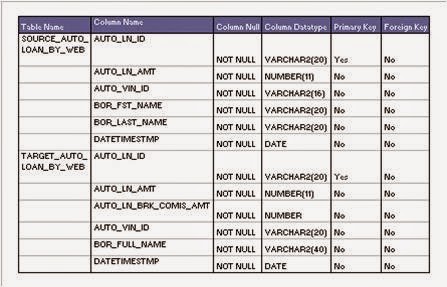Meta Data
The ETL
metadata functional element is responsible for maintaining information
(metadata) about the movement and transformation of data, and the operation of
the data warehouse. It also documents the data mappings used during the
transformations. Meta data logging provides possibilities for automated
administration, trend prediction, and code reuse.
 |
| Metadata |
Meta
data examples:
Examples of
data warehouse metadata that can be recorded and used to analyze the activity
and performance of a data warehouse include:
o
Data Lineage,
such as the time that a particular set of records was loaded into the data
warehouse.
o
Schema Changes,
such as changes to table definitions.
o
Data Type Usage, such as identifying all tables that use the "Birthdate"
user-defined data type.
o
Transformation Statistics, such as the execution time of each stage of a transformation, the
number of rows processed by the transformation, the last time the
transformation was executed, and so on.
o
DTS Package Versioning, which can be used to view, branch, or retrieve any historical version
of a particular DTS package.
o
Data Warehouse Usage Statistics, such as query times for reports.
Business
Metadata:
In IT, Business Metadata is about creating
definitions, business rules. The advantage is of this business metadata is
whether they are technical or non-technical, everybody would understand what is
going on within the organization. Example:
 |
| Business Metadata |
Technical
Metadata:
Technical metadata describes information about
technology such as the ownership of the database, physical characteristics of a
database. In Technical metadata, derivation rules are important when formulae
or calculations are applied on a column. Example:
 |
| Technical Metadata |

No comments:
Post a Comment